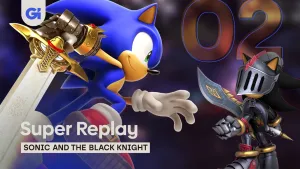A History Of EA Partners
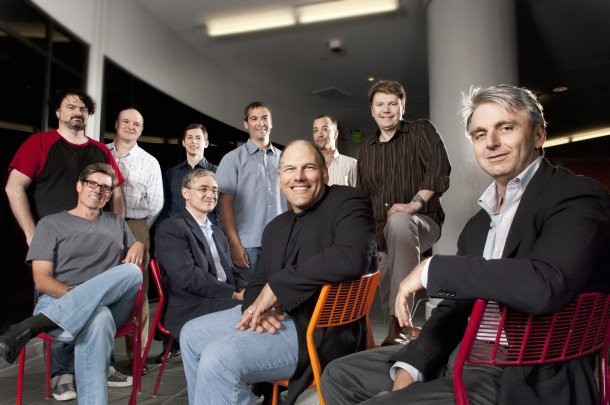
In light of EA Partners' just-announced deal with Insomniac, we're revisiting a story from Game Informer Magazine that details the origins and philosophy of Electronic Arts' deal-sealing branch.
Back in our August 2009 issue (#196), EA was more than happy to talk about all of the high-profile developers it had landed. In that issue I wrote a story on EA Partners and the game they were most proud of at the time, id Software's Rage. Obviously some things have changed since then. ZeniMax Media bought id and eventually obtained the rights to publish from EA. One of Starbreeze's two EA titles was canned. The Epic/People Can Fly project was revealed as Bulletstorm. But the huge deal with Insomniac confirms that EA Partners' momentum is still very much on track. Read on for a look at the state of EA Partners as of last year.
Above: EA Partners general manager David DeMartini (orange chair) and EA CEO John Riccitiello (far right) spearhead partnerships with some of the industry's best and brightest
Altered Beast
Valve, id, Epic, Harmonix, Crytek, Starbreeze, Double Fine, Grasshopper. The list of top-tier developers working with Electronic Arts’ publishing branch EA Partners is impressive, and gamers reap the benefits of this partnership with a steady stream of great titles. But how did EA overcome its reputation as an IP-devouring corporate beast to become the champion of independence?
Whether it’s acquiring shares of Ubisoft, buying up exclusive sports licenses, or attempting a hostile takeover of Take-Two Interactive, Electronic Arts certainly knows how to craft an image as a corporate monolith. But for over a decade the company has been working behind the scenes to cultivate talent in the little guys they’re supposed to be crushing.
It’s easy to assume that EA Partners has only been around for a few years. The third-party publishing wing of Electronic Arts didn’t really push the name all that much until promoting a string of top-tier games like Rock Band, The Orange Box, and Crysis in 2007. Now EAP takes its own slice of EA press conferences for big partner announcements and holds its own press events separate from the internal catalog. The division has actually been around in the background for quite some time under the former moniker of EA Distribution. To initially head the division, EA found someone with plenty of experience in the business of signing top talent.
By 1997, Tom Frisina had co-founded and left two game companies, Accolade and Three-Sixty. His list of big hits included Hardball, Mean 18, Test Drive, and Harpoon. But he bowed out of Accolade due to disagreements with the other owners and Three-Sixty “wound down” in 1994. Frisina worked as a consultant for three years following until he got a call from a business that had invested in Three-Sixty in the past: Electronic Arts.
“’Why don’t you stop your consulting business and do for Electronic Arts what you were doing on the outside when you were running Accolade and Three-Sixty?’” Frisina recalls them asking. “Essentially forming relationships with successful developers around the world, and building and publishing games.”
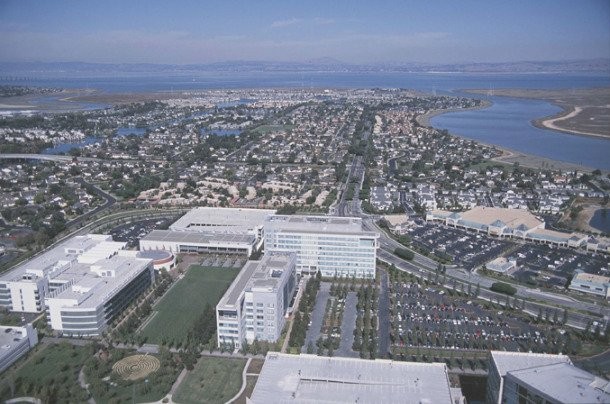
EA Redwood Shores, the home of EA Partners
It didn’t take long for Frisina to settle into his position at the subdivision called EA Distribution (EAD). “After being there for two or three weeks, I said, ‘I think what you guys really want me to do is to focus on product categories that EA Studios is not that successful at building,’” Frisina says. “Goldeneye had just come out shortly before that on the N64 and was a runaway global hit on that platform, but EA didn’t know how to build a first-person shooter at that point – or role-playing games. I said, ‘That’s where I think EAD ought to focus.’”
He signed his first deal with Looking Glass studios for two projects: Flight Unlimited III and Irrational Games’ System Shock 2. Not long after, he locked down the James Bond rights and teamed EA with MGM Interactive. After a few months of working with the studio, Frisina became familiar with the rest of MGM’s lineup and offered his professional opinion. “I encouraged David Bishop, the leader of MGM Interactive, to kill those four titles – because I and my cohorts at EA didn’t see any return on the investment of all the money they were putting in – and to focus all of their energy on building Tomorrow Never Dies.” MGM followed suit and appreciated the frank business advice. Frisina used the momentum to pursue more deals.
EA had a previous deal running with Dreamworks Interactive, publishing The Lost World: Jurassic Park 1997 to modest success, but the two companies had a rough time agreeing on the next project. “EA wasn’t really very interested in carrying on a relationship with DreamWorks because they weren’t doing the kind of things the studio wanted to do,” Frisina recalls. “So they said, ‘Why don’t you take over the relationship with DreamWorks and see if you can create something bigger?’” Frisina kicked around some ideas with the developer until they hit a clear winner. “‘Steven Spielberg wants to make a video game version of Saving Private Ryan. What do you guys think about that?’” Frisina remembers. “Well I thought that was just a s--- hot idea.” Medal of Honor opened to tremendous success, and EA later bought DreamWorks Interactive.
Frisina’s next big project came out of a meeting with Swedish developer DICE. “I saw what Battlefield 1942 was looking like in prototype form and I flipped out and thought that this was going to be the next great thing for the industry,” Frisina says. EAD signed a deal with DICE in 2000, releasing Battlefield 1942 and Battlefield Vietnam to huge sales before acquiring the developer outright in 2004.
Several years and game deals later, then-President and COO of EA John Riccitiello pushed for a new name for EA Distribution. “It became apparent to John when I started reporting to him in 2003 that we needed to make this EAD thing a much more global entity, more than just an offshoot of the distribution business,” Frisina says. “We needed to call it something more appropriate. I talked to my cohorts in Europe, Australia, and Japan, and we came up with the name EA Partners.” The change was subtle, yet fitting as it more accurately reflected the business philosophy of creating partnerships with talented developers based on mutual interests. “We didn’t change anything in terms of the personnel, business model, or mission,” Frisina says. “We just changed the name.”
In 2003, John Riccitiello started making grand claims about EA Partners, stating he anticipated raising the revenue up to a billion dollars by leveraging relationships with huge independent developers normally wary of working with publishing juggernauts. But before he delivered on his promise, Riccitiello left the company in 2004 to create Elevation Partners, a private equity firm that invested in new intellectual properties in the entertainment space.
CHANGING COURSE
With the main advocate of EA Partners gone, the company focus swung back to internal development, leaving many of the partners frustrated. “With EA, personally we found the situation unworkable,” said Oddworld Inhabitants co-founder and president Lorne Lanning in issue 194 of Game Informer. “We found that if the publishers don’t own your IP, they don’t have any incentive to push your game…That’s not a business relationship. That’s a master-slave relationship – one that we had no interest in continuing.”
In the same year Oddworld: Stranger’s Wrath was released (2005), EAP landed a major coup, working out a distribution deal with Valve after the developer had a falling out with Vivendi Universal. The partnership continues to this day, with nearly a dozen games released. “EAP’s ability to work uniquely with third-party developers is perhaps its greatest strength,” says Valve marketing VP Doug Lombardi. “For every developer, the range of valuable services a publisher can offer from its global operation will vary. However, EAP is one of very few organizations inside of any leading publisher that is specifically designed to be extremely flexible in this regard and still able to leverage a worldwide and world-class organization.”
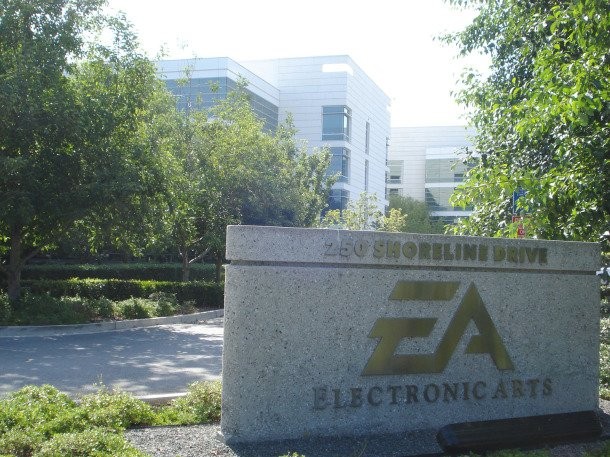
In early 2007, Senior VP and general manager of EA Partners David DeMartini and EAP’s VP of worldwide business development Sinjin Bain took their business model in a more complicated direction by signing a deal with MTV Games and Harmonix to produce Rock Band. The team also benefited from the return of John Riccitiello as CEO and new EA Games label president Frank Gibeau, both of whom DeMartini cites as “two of the biggest advocates of independently developed games in our organizational structure.” The total worldwide EAP staff runs lean at just over 50 people.
Why the shift from despised publishing partner to an attractive distribution broker? DeMartini describes some previous EA relationships as two people with their hands on the wheel trying to drive the car. “At the very least you’re probably going to get into some kind of disagreement with regards to who’s oversteering, you or the other person,” DeMartini says. “You’re probably both right, and you’re probably both wrong.” But now, DeMartini claims EAP rides in the back and only give directions when asked. “If they don’t need the help, then we’re happy to sit in the back seat and enjoy the ride,” he says. “Based on the partners that we have it’s usually a very successful journey.”
To companies like Oddworld Inhabitants that feel scorned by past dealings, DeMartini promises things have changed. “I think the only way you can improve as an organization is to sometimes accept the harsh criticism of your past partners,” he says. “I think our success in the last two-and-a-half years speaks volumes to how EA is as an overall organization, having that ability to look at what we’re doing right, and what we’re not doing right, and then be nimble enough to change the behavior.”
GAINING MOMENTUM
The proof of the partnerships’ success is astounding, with 22-percent of titles rated 90 or higher by Metacritic since 2005 being EAP projects —13 games total. “That’s a lot of home runs within the portfolio,” DeMartini proudly proclaims.
One EAP title not in that percentile is Hellgate: London, whose servers were shut down just over a year after it was released, serving as proof that the system isn’t bulletproof. “We are sad that it didn’t work out, because that game had tremendous creative energy behind it,” DeMartini says, admitting that the game needed several more months of development. “We just need to make sure that we don’t do that again because it killed the franchise and it killed the studio. We’re in the business to help people grow and not to help them be put out of business.”
EAP’s deals vary from each partnership, ranging from straight retail distribution to full co-publishing where EA is funding, assisting with design, and handling ports (see the PS3 version of The Orange Box). It all depends on what the developer wants, and rarely are two deals the same. “We laugh and say there’s no such thing as a deal that’s not complicated when EAP is involved, because we’re signing star free agents,” DeMartini says. “Of course that complexity is always worth it because these are the cream of the crop, absolute best of the industry. They’ve got their ways of doing things and it’s incumbent upon the publisher to zig to their zag.”
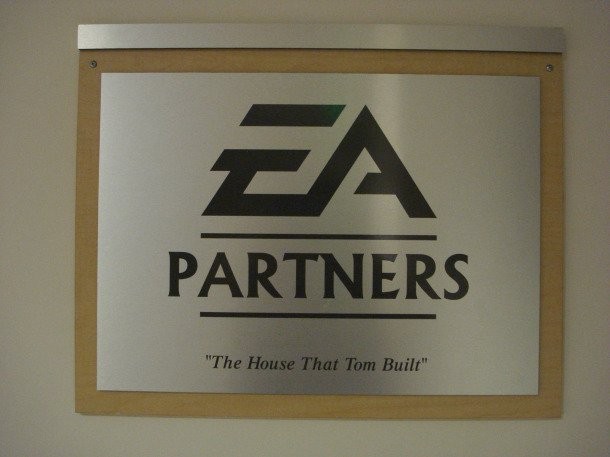
One such developer is recent signing Double Fine. “EAP seems to really believe that it’s best to let creative people be creative, and that means a lot to me,” says president and founder Tim Shafer. “They have never tried to get between me and the game – but when I need feedback about what’s working and what’s not, they have resources to get that data for me.”
Does all of this focus on knockout third-party games take away the luster of internal properties? Signal Hill Analyst Todd Greenwald thinks so. In an evaluation of EAP he claimed that these high-profile projects “speak to EA’s marketing and publishing strengths, but [don’t] say much for their development talent.” He also says that the distribution deals have thin margins and that “it’s indicative of the fact that they are not able to develop enough of their own titles to meet their revenue and earnings goals, that they need to fill in the gaps with these distribution deals.”
EA Games label president Frank Gibeau disagrees. “I think what these analysts aren’t taking into account is that [EAP] has a very different risk profile; we’re not carrying those bodies on our payroll,” he says. “So once the product ships, we’re not paying the salaries of the employees of third-party development in terms of headcount or burn rate on R&D. And if we don’t sign the deals, we’re going to compete with them anyway, so why not participate?”
WE COME IN PEACE
Despite its impressive standing, EAP still has to prove every day that the company reputation of a bottom line-driven, emotionless corporation machine isn’t entirely accurate. “Our executives can walk in and talk to them about what’s great in their product, what they liked about the last one, and understand what the feature set is, and [try to prove] that we’re not as bad as the reputation that we unfortunately built up in the late ‘90s and the early 2000s,” says Gibeau. “It’s a new team. It’s a new way of approaching the business that cares about the product, and we’re not here to screw you or assimilate you.”
“We don’t have to own everything,” DeMartini adds. “It’s like asking the same question, ‘If a developer is really good, [should we] go buy them and bring them in-house?’ No, we don’t. I don’t want to own anyone’s IP anymore, I want to continue to provide a level of service that makes them proud to say that they’re working with EA Partners.”
This philosophy seems to be paying off with the latest string of top developer partnerships. Grasshopper Manufacture is counting on EA’s expertise in the western game market to help make a larger impact than Suda 51’s past quirky titles with it’s new horror game (recruiting Resident Evil mastermind Shinji Mikami doesn’t hurt either). Prior to id Software’s recent acquisition by ZeniMax, EAP was able to win the prestigious developer away from its longtime publisher Activision with Rage. After selling millions of copies of its Gears of War franchise with Microsoft Game Studios, Epic Games is bringing its new People Can Fly developed shooter to EAP. Even though Crysis was a slow burn to 1 million in worldwide sales, Crytek is continuing the relationship with EAP for Crysis 2, hoping to capitalize on a new multiplatform release philosophy.
But there are only so many well-funded indies in the world like these. What happens when all of the big boys are spoken for? “There are new ids and Epics and Valves and Harmonixes evolving every day, and you need to be out there in front of those trains,” DeMartini says. “Three years ago people might not have highlighted Crytek. Now Crytek’s in the conversation with the top five developers in the world. Look at it like a baseball analogy – you need to sign superstar players that are already established, but you also need to have a great farm system.”
Areas EAP is looking at strongly right now include Asia and Eastern Europe. “You need to be looking for potential partners worldwide,” DeMartini says. We’ve established an accepted philosophy where we will look at any game, and we will give you honest feedback on any title. Even if it’s unlikely that we’re going to publish it, we’ll have you in for a visit, we’ll take a look at the software, we’ll give you our honest feedback.” If they can find the next Valve, it’ll definitely be worth it. “You’ve got to kiss a lot of frogs to find a few princes,” DeMartini says.
In the end, EA certainly has a great program in place to help top independent developers make the best games they can. But how long can this ideal program last? In the past all it took was a change from pro-indie management for the dust to start gathering on EAP. And as long as EA is a publicly held company, it’s got to satisfy the shareholders whether that means eventually buying up some of these developers or once again turning the focus to internal projects. We can only hope that the continued success of the current EA Partners program earns enough profit to keep the corporate beast at bay.
EA PARTNERS:
A TIMELINE
March 1997
EAD and Dreamworks Interactive sign deal for publishing of licensed games
September 1997
EAD kicks off new charter under Tom Frisina and Nancy Smith – EAD changed from being a pure distribution partner to full publishing (development, marketing, etc.)
November 1997
EAD and Dreamworks Interactive ship The Lost World: Jurassic Park
May 1998
EAD and Looking Glass Studios sign deal
August 1999
EAD, Irrational Games, and Looking Glass Studios ship System Shock 2
September 1999
EAD and Looking Glass ship Flight Unlimited III
November 11, 1999
EAD and Dreamworks Interactive ship Medal of Honor
November 16, 1999
EAD, MGM, and Black Ops ship 007: Tomorrow Never Dies
February 2000
EA buys Dreamworks Interactive, merges them with Westwood to form EALA. MOH goes internal to EALA
November 2000
EAD, MGM, and Black Ops ship 007: The World is Not Enough. Afterwards EA takes development of Bond license internal to EA Redwood Shores
December 2000
EAD and New Line announce deal for the Lord of the Rings license. Development started externally at Stormfront, but then went to EA Redwood Shores
January 2001
EAD and DICE announce partnership for Battlefield 1942
November 2001
EAD, Fox, and Radical ship The Simpsons Road Rage
September 2002
EAD and DICE ship Battlefield 1942
June 2003
John Riccitiello, then COO and President of EA, renames the group EA Partners
December 2003
EAP and Free Radical announce TimeSplitters deal
January 2004
EAP and Oddworld Inhabitants sign deal for Oddworld: Stranger’s Wrath
March 2004
EAP and DICE ship Battlefield Vietnam
April 2004
John Riccitiello leaves EA to form Elevation Partners
June 2004
EAP and Crytek announce partnership
November 2004
EA buys Battlefield developer Dice
January 2005
EAP and Oddworld Inhabitants ship Oddworld: Stranger’s Wrath
June 2005
EAP and DICE ship Battlefield 2
July 2005
EAP and Valve announce distribution deal
September 2006
David DeMartini named general manager of EAP
November 2006
EAP and Namco Bandai announce co-publishing deal for Hellgate: London
April 2007
John Riccitiello returns to EA, named CEO
March 2007
EAP and MTV Games and Harmonix announce distribution for Rock Band
October 10, 2007
EAP and Valve ship The Orange Box
October 31, 2007
EAP and Namco Bandai ship Hellgate: London
November 13, 2007
EAP and Crytek ship Crysis
November 20, 2007
EAP and MTV Games ship Rock Band
February 2008
EAP and Starbreeze announce development of Project RedLime
July 2008
EAP and id Software announce partnership for Rage
August 2008
EAP and Epic/People Can Fly announce partnership
August 2008
EAP and Grasshopper Manufacture announce partnership
September 2008
EAP and Crytek ship Crysis Warhead
October 2008
EAP and MTV Games ship Rock Band 2
November 2008
EAP and Valve ship Left 4 Dead
December 2008
EAP and Double Fine announce partnership for Brutal Legend
February 2009
EAP and Starbreeze announce partnership for Jason Bourne game
February 2009
EAP and Spicy Horse announce partnership for Alice 2
June 2009
EAP and Realtime Worlds announce distribution deal for All Points Bulletin
June 9, 2009
EAP and MTV Games ship Rock Band Unplugged









